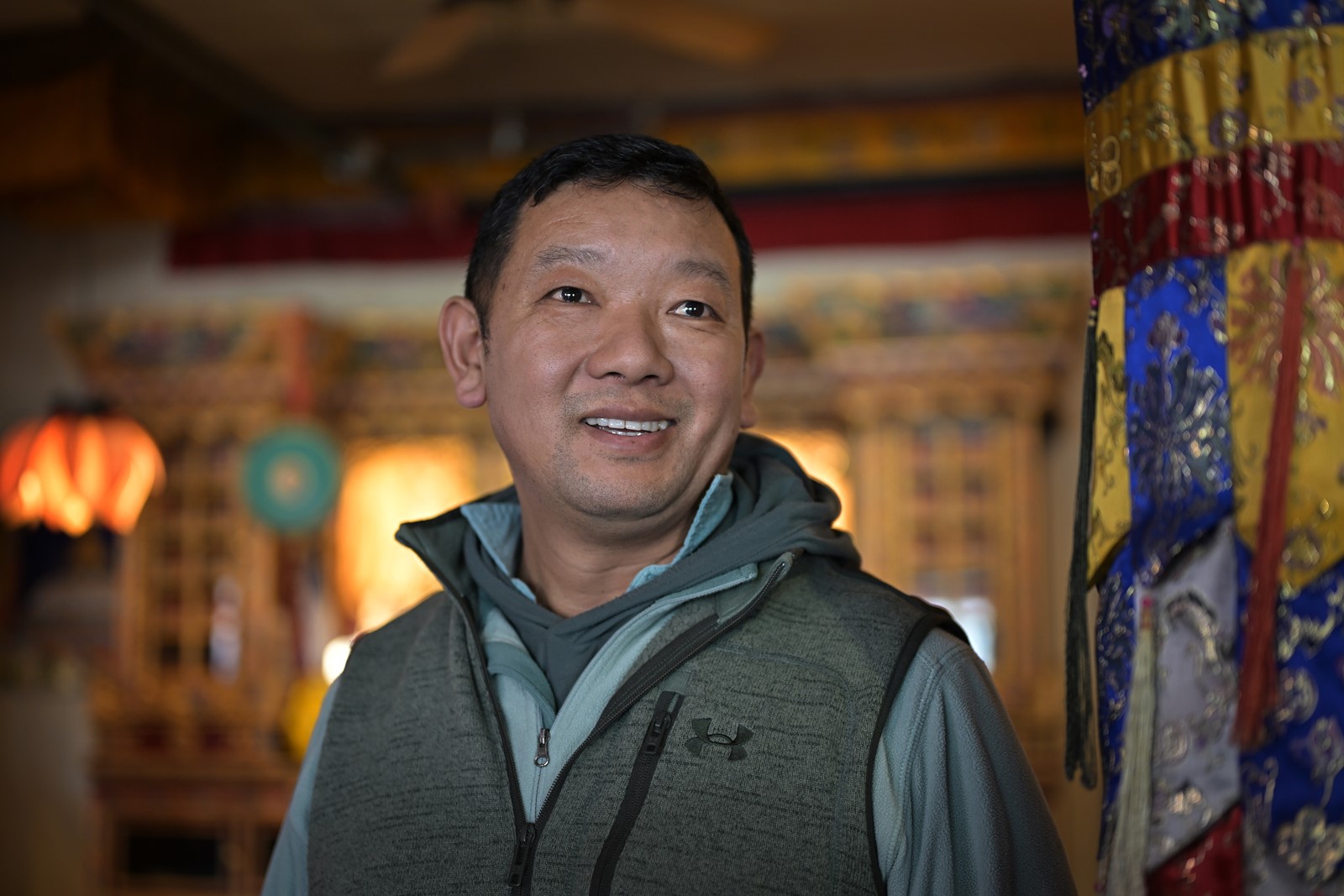


Ngima Nuru Sherpa is small in stature, but he stands tall in the annals of Mount Everest. The 5-foot-7, 150-pound native of Nepal’s Khumbu region has reached the summit of the world’s tallest mountain two dozen times, third-most on the all-time list. Two other Sherpas have recorded more summits, but he was the youngest to notch 24.
And, at age 43, he’s going back to the 29,032-foot mountain that Sherpas call Sagarmartha this spring for No. 25.
Now, though, he’s in Golden, visiting Colorado’s growing Sherpa community and telling stories of his mountaineering achievements as a climbing guide. He’s also doing a little sightseeing, with plans to take in the view from the Continental Divide next week. He’s eager to give skiing a try, too.
“We wanted him to share his experience with the people of Golden,” said Lhakpa Sherpa, a leader in Colorado’s Sherpa community and the owner of the Sherpa House Restaurant and Cultural Center in Golden. “Because he is visiting here, I would like the local people to hear his story about being 24 times on Everest.”
Ngima grew up in a village near Namche Bazaar, the commercial center of the Sherpa people, located in a valley 20 miles from Everest. He went to Everest for the first time when he was 21, hauling loads to the infamous South Col at the edge of the “Death Zone” that begins at 26,000 feet. The following year, he reached the summit.
“I had a dream to be on the highest point in the world, so at that moment I am very, very happy — my first time, I did it finally.” Ngima said. “It called me again and again.”
He concedes that guiding on Everest evolved over time into more of a job than an adventure, but he still appreciates the experience and the beauty of the mighty Himalayas. Eight of the world’s 10 highest mountains are located in Nepal, in whole or in part. Everest straddles the border between Nepal and Tibet.
“So much beauty,” said Ngima (pronounced Neema), who has summited 11 times from the Nepal side and 13 from Tibet. “I’m really happy, lots of people, their dream comes true. Guiding on Everest, I’m really happy with that.”
Ngima went to schools in the Khumbu region that were founded by Edmund Hillary, a New Zealander who made the first ascent of Everest in 1953 with Sherpa Tenzing Norgay and later devoted himself to improving the welfare of indigenous people in the Everest region.
Lhakpa estimates there are 400 to 500 Sherpas living in Colorado, and says that number is growing.
“More and more Sherpa people are moving to Colorado because of the number of people who are traveling from Colorado to Nepal, visiting the Himalayas,” said Lhakpa, who opened his restaurant in 2009. “They establish good friendships, they become good networks connecting to outdoor adventure. Also, it’s a mountainous state, with the fourteeners, and these days people post things on Facebook and stuff like that, so you can see what other people are doing. Through social media they get attracted by Colorado’s beauty and they come here more.”
Lhakpa first came to Colorado in 1996. After finishing high school in Nepal, he’d begun working in support of trekking and mountaineering expeditions. On one trip he met a couple from Golden who were trekking on their honeymoon and they “exchanged friendship in the mountains,” as he puts it, so they sponsored him to visit Golden on a tourism visa. He fell in love with Colorado and decided he wanted to go to college here, so he returned to Nepal and got a student visa. He attended Red Rocks Community College and Metro State.
Last summer, he established a cultural center in a building he owns next to his restaurant, located on the edge of the Colorado School of Mines campus. He says it’s only a temporary home for it, though, because Colorado’s Sherpa community needs a meeting place with more space.
“We had to start somewhere,” Lhakpa said. “More and more Sherpas are moving to Colorado, and they feel the need for a cultural center where they can celebrate rituals, festivals, Buddhist things, have gatherings. The whole Sherpa people want to have our own space somewhere on private land. We have raised some money. We’re all excited about it.”
Lhakpa realized they needed a larger place last year when a family member died, straining their resources to put on a suitable funeral.
“We had a really challenging time to organize all that, so we said we need a place to have rituals, cultural stuff and religious items where we can come together,” Lhakpa said. “That’s when we realized everybody had an interest in creating a real cultural center. We need to have a place to sit down and chit-chat and share our experiences, share our stories to our children, and have a sense of community.”
Lhakpa hopes to bring Ngima back in a year or two to speak at the opening of the new cultural center when it becomes a reality.
Since the days of Hillary, Sherpas have been renowned not only for their stamina at high altitudes and capacity for hard work, but also their cheerful friendliness and simple grace.
“Sherpa people are naturally happy because they are born and raised in the mountains without distractions,” Lhakpa said. “Buddhism is not religion, it is a way of living. We are happy to live and see beautiful sunshine, beautiful flowers. Our culture has pushed us to happiness even though we have less material resources. Nature and the mountains provide us a sense of serenity, a sense of spirituality. We feel if there is a god, he might be closer in the mountains. Being so close to nature gives us happiness.”


 PREVIOUS ARTICLE
PREVIOUS ARTICLE
